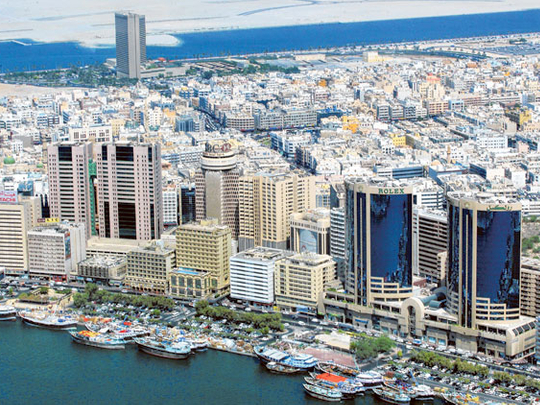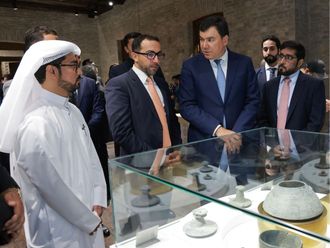
Dubai: Dubai continues to seek out room for more development projects even as a civic body survey shows that more than 60 per cent of Dubai city is either covered by buildings or used for projects under construction.
According to a survey that was carried out by the buildings inspection department at Dubai Municipality, 64 per cent of the city is occupied by buildings while the share of buildings in rural areas adds up to only three per cent — leaving room for expansion projects.
The new database that recorded the number and types of buildings not only serves to help in planning out the city, but also helps in detailing the urban growth rate and in identifying areas that can be used in the future for housing, investment or industrial purposes. The total area of the emirate is approximately 4,000 square kilometres.
“We started the survey about one year and a half ago with 45 engineers and inspectors, and have now entered the third stage. The first stage included calculating the number of buildings, including high-rise structures and villas in Dubai but we did not include the Jebel Ali Free Zone Authority or any other free zone areas because they are not under the municipality’s jurisdiction,” explained Jaber Al Ali, head of the buildings inspection department at Dubai Municipality.
The second stage of the survey involved recording the number of units in each building and its stated function, while the last stage involves an inspection committee checking on the structural building violations and determining which buildings need to be demolished or renovated.
The survey showed that there are a total of 88,931 buildings, including 45,364 buildings in Bur Dubai, 40,392 in Deira and 3,175 in rural areas. It also indicated that areas with the highest number of violations in Bur Dubai are in the residential areas of Al Qouz and Al Bada’a near Al Satwa, while the highest number of building violations in Deira were reported in Abu Hail and Rashidiya. According to the survey, more than 40 per cent of buildings in these areas require maintenance ranging from minor to comprehensive work.
Al Ali noted that some of the most common violations recorded included commercial property being converted into rooms with bed space, as well as residential premises being used for commercial purposes or as workers’ accommodations.
Other building violations included multiple families living in one villa or bachelors living in areas designated for families, buildings that have been left abandoned or have never had any maintenance done. The penalties for each building code violation can be as much as Dh50,000.
Safety requirements in buildings were also scrutinised and the most common violation noted was buildings not providing fire exits, as well as health hazards such as lack of proper ventilation or lighting.
“The database will be periodically updated and will be available not only to municipality departments but to other government authorities who may need this information and the statistics to make appropriate decisions and carry out their projects, such as police and the electricity and water authorities,” Al Ali said.












